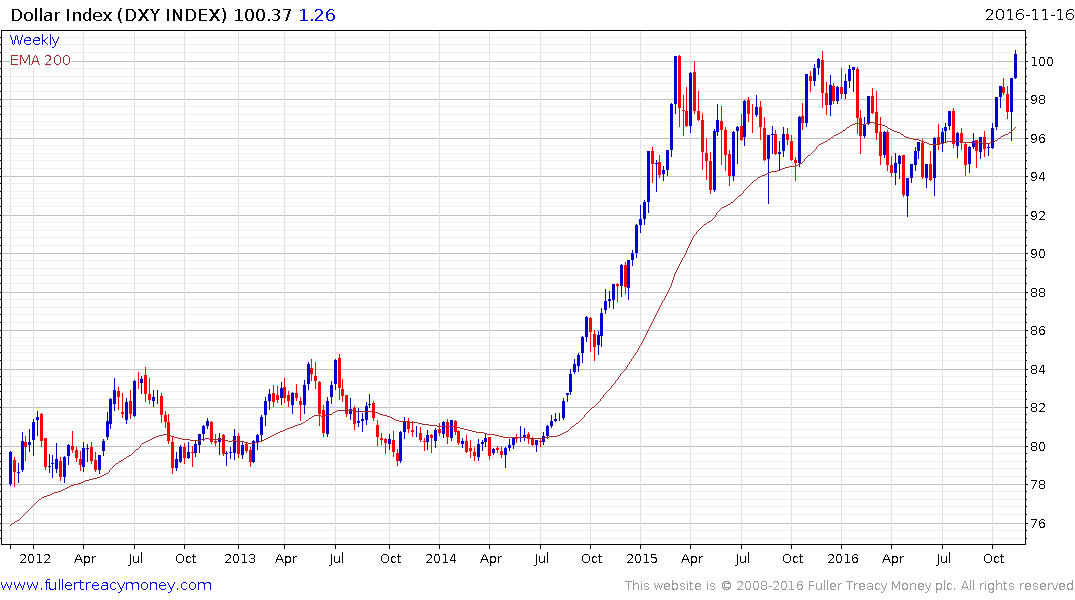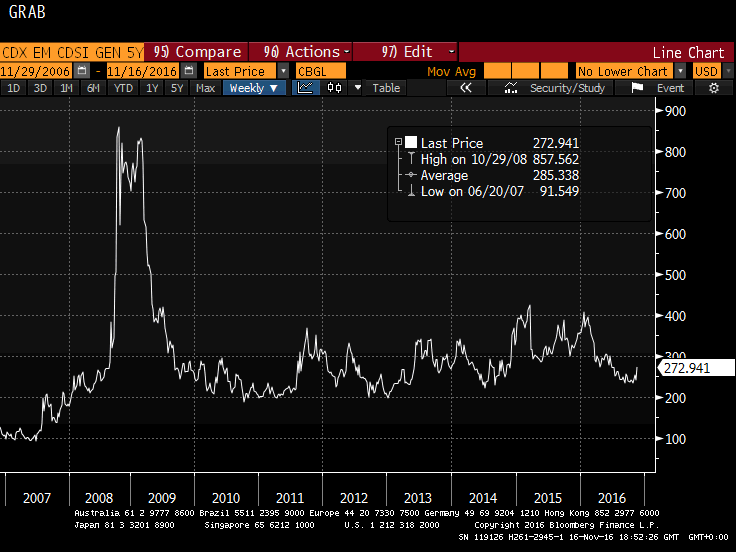The dollar, bank leverage and the deviation from covered interest parity
This article by Stefan Avdjiev, Wenxin Du, Catherine Koch for The bank of International Settlements may be of interest to subscribers. Here is a section:
Our focus, therefore, is on the banking sector, and the ability of banks to take on
leverage. The key message of our paper is that the value of the dollar plays the role of a barometer of risk-taking capacity in capital markets. In particular, it is the spot exchange rate of the dollar which plays a crucial role. Deviations from CIP turn on the strength of the dollar; when the dollar strengthens, the deviation from CIP becomes larger. To the extent that CIP deviations turn on the constraints on bank leverage, our results suggest that the strength of the dollar is a key determinant of bank leverage.The cross-currency basis is the difference between the dollar interest rate in the cash market and the implied dollar interest rate from the swap market when swapping foreign currency into dollars. The cross-currency basis measures deviations from the CIP condition. Figure 1 plots the broad dollar index (in red), which is the trade-weighted US dollar exchange rate against its major trading partners. When the red line goes up, the dollar strengthens. The blue line tracks the average cross-currency basis for the ten most liquid currencies vis-à-vis the dollar. We see that the cross-currency basis is the mirror image of dollar strength. When the dollar strengthens, the CIP deviations widen. This is especially so in the last 24 months, reflecting the stronger dollar.
One of the biggest sources of speculation following Donald Trump’s election has been corporate taxes. The USA has one of the most punitive rates in the world and that acts as a headwind domestically and an obstacle to highly successful corporations repatriating overseas profits. If the Republican-led government does indeed succeed in reforming corporate taxes and gives an incentive to large companies to bring their profits home it could have an outsized effect on the Dollar which is why the issues discussed in the above report are important.
Companies like Apple have employed a rather elegant solution to repatriating profits. They have been issuing increasing quantities of foreign denominated debt. This allows them to repatriate the proceeds and since these funds are borrowed corporate taxes are not applicable. The debt is then paid for with revenue from offshore operations. With such a cosy arrangement which is largely independent of a government to tax, it is arguable how large an incentive would be required for such companies to repatriate their offshore holdings. This is particularly true because once the money is warehoused in the USA it is then susceptible to future new taxes unless of course it is returned to shareholders via dividends or buybacks.
For other companies relocating outside the USA and thereby availing of a more attractive tax base has been a favoured strategy. This has been a PR nightmare for companies since they are very obviously avoiding US taxes and this group also represents a potentially more attractive cohort for moving back home.
The potential for the US to become a more attractive corporate tax environment, not least for small to medium sized businesses could act as an additional tailwind for the Dollar. That could be a headache for emerging markets particularly in Latin America. US Dollar funding tends to represent a significant proportion of overall debt in that region but it is also a factor in Asia.

The US Dollar Index continues to flirt with the 100 level which represents the upper side of an almost two-year range. While a pause in this area is possible, not least to unwind the short-term overbought condition, a clear downward dynamic similar to those posted in March and November 2015 would be required to question potential for a successful upward break.

Such a move would throw Dollar funding issues squarely back into the spotlight because the relative attractiveness of investing outside the USA is reduced when the Dollar is trending higher and the spread required for doing so needs to be wider. After a period when emerging market spreads have been historically tight that represents a quite a challenge and emerging market CDS spreads are now bouncing.


